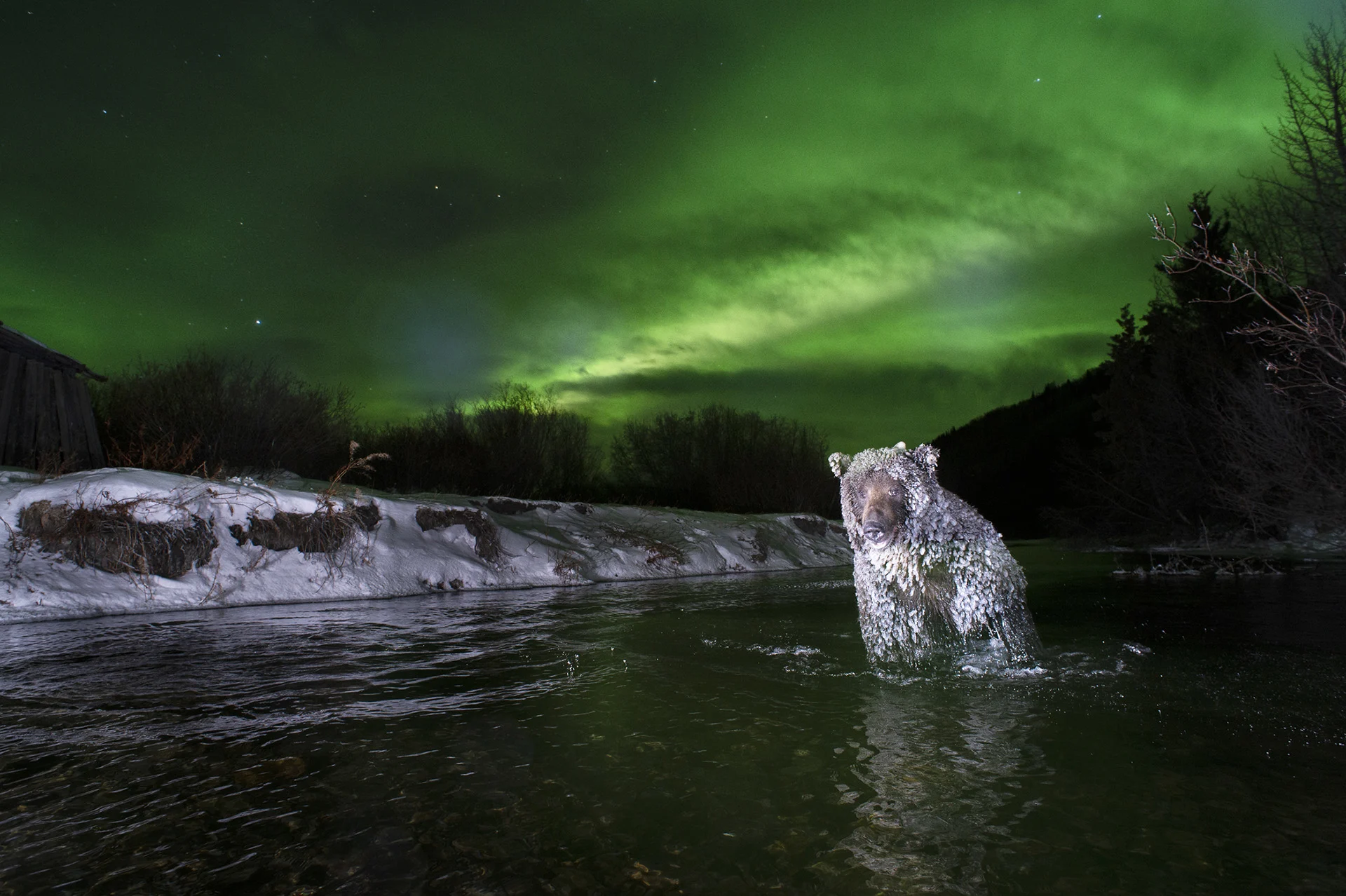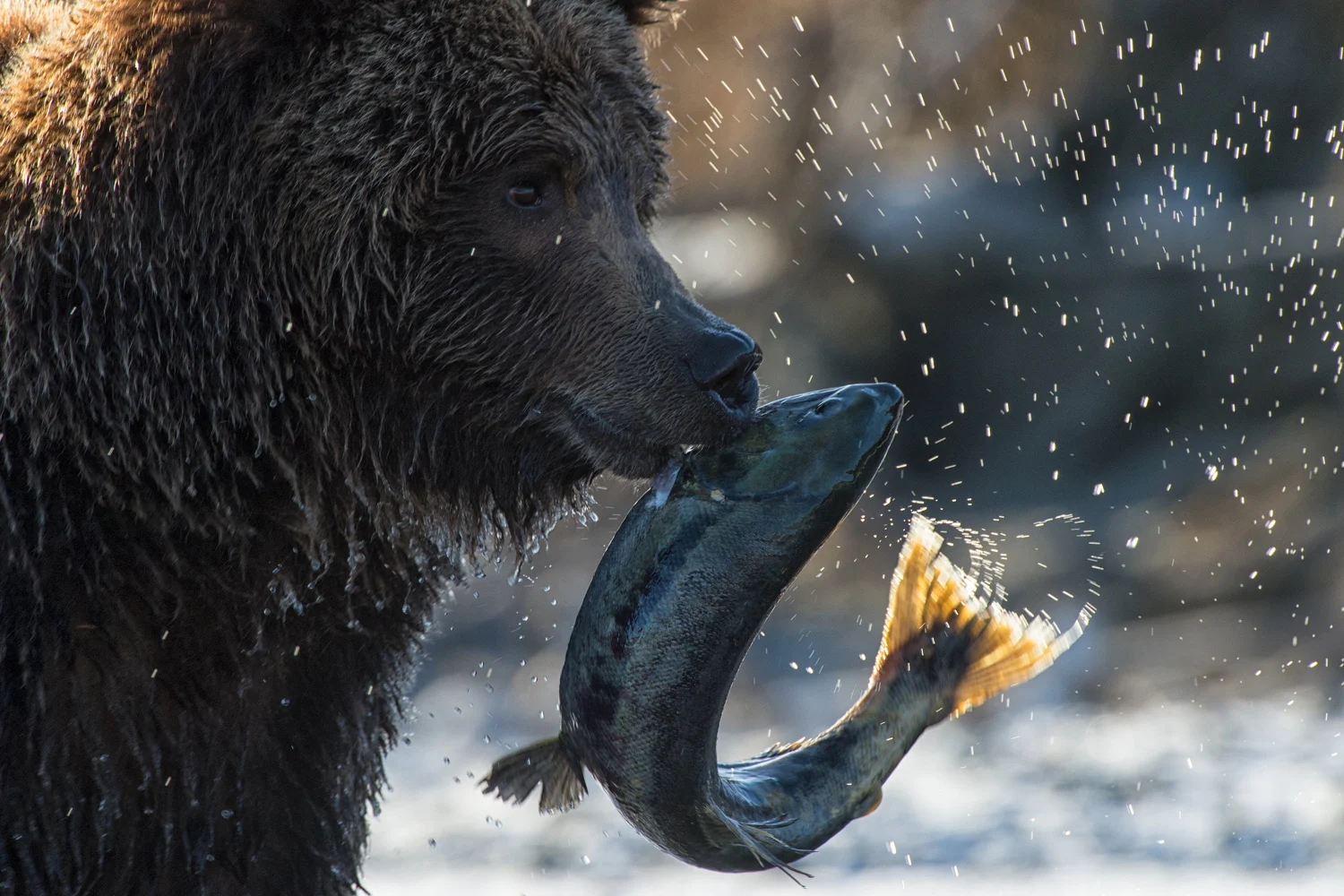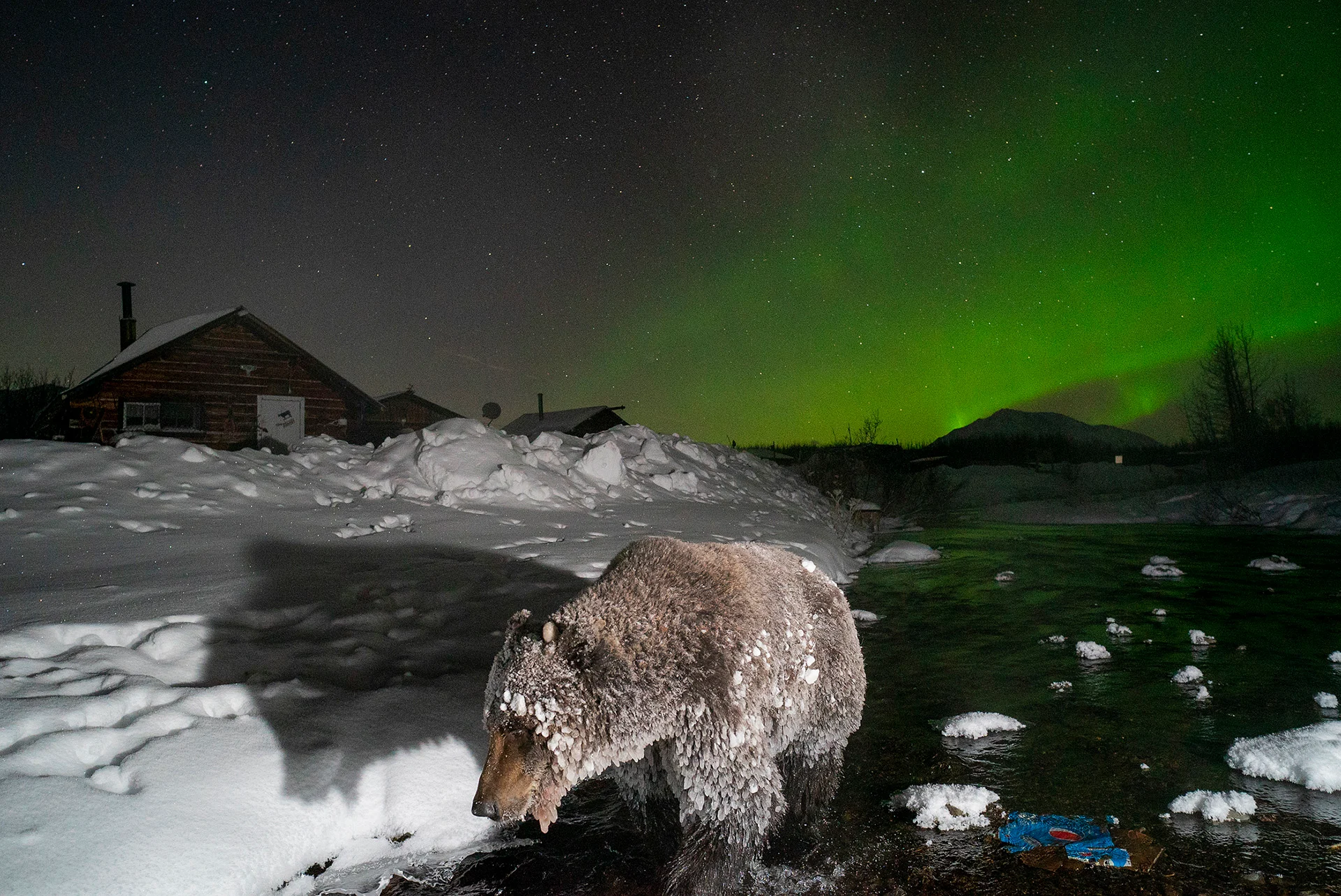
Majestic ‘ice bears’ are seeing less of winter, and more of their neighbours
Photographer Peter Mather spent months outside in the frozen Yukon wilderness capturing the perfect image of the grizzlies known as 'ice bears' to draw attention to their situation as their food source dwindles, increasing the likelihood of human-bear interactions.
The people of Klukshu in the Yukon live alongside “ice bears,” a type of grizzly that carries a thick coat of ice during parts of the season from the frozen rivers where they fish.
As one of the main fishing villages for the Champagne and Aishihik, the people of Klukshu have been living alongside the bears for generations — in relative peace.
“It seems like all my life I've been around bears because we live beside a salmon stream and salmon is our main food,” recalled Chuck Hume, a Tlingit/Champagne-Aishihik Elder.
“They're just like family to us.”
However, a warming climate is contributing to a dwindling salmon population. The neighbouring Kaskuwalsh glacier is melting, leading to profound impacts on the landscape that disrupt the nearby salmon runs.

A grizzly bear grabbing a snack. (Peter Mather)
“I find that the bears are staying out later, because your salmon are late. September, October, November is when you get the ice bears. So this is unusual,” Hume explained.
“Usually [by the] end of September they've left already. But now you can go into almost December and still see bears in the Klukshu area. And that's happening all over now with climate change [as] the bears are becoming adapted. They're already getting themselves ready for that period. They know when the fish are coming, you know, all of that's built into their system in the same [way] as our people. You know, it's built into our system.”
READ MORE: Polar bears fight for survival as ice disappears
In his efforts to document the ice bears’ unique appearance and raise awareness about their situation, wildlife photographer Peter Mather has witnessed these changes first-hand. He specializes in camera trap photography, where digital cameras triggered by infrared sensors are set up in the wilderness to capture animals in their most natural habitats.
In early 2022, he spent three months in and around Klukshu in an attempt to, in his words, “get a really neat photo that will tell the story that ice bears in a way that's never been told before.”
The image in question: a grizzly bear, its fur coat encased in ice, fishing in the river in the dead of night underneath the aurora borealis.

One of the camera trap images of an ice bear nicknamed 'The Mayor' beneath the aurora borealis. (Peter Mather)
“First Nations people around here have been living with these bears and salmon forever. And they’ve got this cool relationship with the bears where they're kind of, you know, just living beside each other for a long time,” Mather explained.
“There's conflict sometimes. But you know, it's remarkable how they've kind of developed that relationship.… And so if the salmon disappear, what happens to the bears? What happens to the people?”
The Weather Network partnered with Mather to make a short documentary about his efforts to capture the image and tell the story of the relationship between the people of Klukshu and the ice bears. Watch the video above to see the results, and keep an eye out Mather’s full length documentary about the ice bears at a film festival or streaming service near you.
Thumbnail image: Camera trap image of an 'ice bear' on the river near Klukshu in the Yukon. (Peter Mather)












